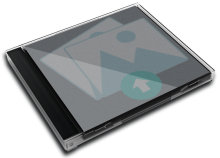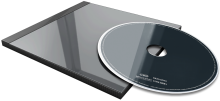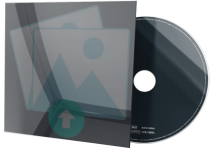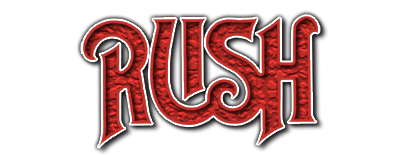
Cover NOT yet available in
Join up for 4K upload/download access
Your Rating (Click a star below)
![]()
![]()
![]()
![]()
![]()
![]()
![]()
![]()
![]()
![]()
Track List
01) The Big Money
02) Grand Designs
03) Manhattan Project
04) Marathon
05) Territories
06) Middletown Dreams
07) Emotion Detector
08) Mystic Rhythms
01) The Big Money
02) Grand Designs
03) Manhattan Project
04) Marathon
05) Territories
06) Middletown Dreams
07) Emotion Detector
08) Mystic Rhythms
5:37
5:06
5:07
6:09
6:20
5:15
5:11
5:53
Data Complete 70%
Total Rating
Total Rating
![]() (2 users)
(2 users)
Back Cover
CD Art
3D Case
3D Thumb
3D Flat
3D Face
3D Spine
First Released
![]() 1985
1985
![]() Progressive Rock
Progressive Rock
![]() Gritty
Gritty
![]() Rock/Pop
Rock/Pop
![]() ---
---
![]() Fast
Fast
![]() Album
Album
![]() 0 copies
0 copies
Album Description
Available in:


Power Windows is the 11th studio album by Canadian rock band Rush, released in 1985. Power Windows was the first Rush album to be produced by Peter Collins and the album was recorded at The Manor in England, AIR Studios in Montserrat and at Sarm East Studios in London.
Power Windows introduced more keyboard synthesizers into the band's sound. "The Big Money" and "Mystic Rhythms" were both made into music videos featured in MTV's rotation at the time.
Power Windows' lyrics are focused primarily on various manifestations of power. For example, the song "Manhattan Project" explores the origins and consequences of the U.S. military's development of the atomic bomb, and "Territories" comments on nationalism around the world. Like "Subdivisions," from the album Signals, "Middletown Dreams" explores suburban monotony and the average person's attempts to temporarily escape it.
In February 1985, work started at Elora Sound in Canada for three weeks, in a barn with a 24-track studio. Vocalist and bassist Geddy Lee and guitarist Alex Lifeson were working on songs that could fit the lyrics drummer Neil Peart wrote at a small desk there, with Peart at the same time trying to write lyrics adaptable to Lee and Lifeson's music. During his time there, Peart researched the Manhattan Project to prepare to write lyrics for the song of the same name. He also wrote rough outlines for "The Big Money," "Mystic Rhythms" and "Marathon". Lee and Lifeson sorted through jams and Lifeson’s riff tapes to write music for these songs, with each song taking up to a week. They then began on "Middletown Dreams", "Marathon" once again, and then "Grand Designs".
Peart went through tapes to the five new songs in a Miami hotel room in March, getting ready for the warm-up tour gig in Lakeland, Florida. At this point, the band met up with engineer James "Jimbo" Barton, recommended by producer Peter Collins. Later at Elora, the songs whose lyrics Peart was formerly struggling with, "Territories" and "Manhattan Project", began to come together. Peart was also working on lyrics to a ballad called "Emotion Detector", which seemed to work perfectly with the music they were jamming on at the time. The music to "Territories" was also arranged, and a tape of seven songs was created. They had trouble with writing the music to "Manhattan Project", but Collins contributed ideas to this and other songs.
In April, at The Manor Studio in England, basic tracks were recorded more quickly than usual, in the span of a few weeks, to capture more spontaneous performances ready for overdubs. Andy Richards was brought in to provide extra keyboard programming and performances. The drum tech was sent to London to pick up African and Indian drums for use on "Mystic Rhythms", and bongos were also used on "Territories".
Lifeson began recording guitar overdubs in May at AIR Studios in Montserrat. Next, in June, at Sarm East Studios in London, he began on guitar solos, and Lee did vocals. They moved to a townhouse in July for mixing, a decision on the track listing, and the artwork, credits, and photos. Strings were recorded for the album by a 30-piece orchestra in Studio 1 at Abbey Road Studios in August. A 25-piece choir was also recorded at Angel Studios for the ending of "Marathon". In September, Lee oversaw the mastering in New York, and proofs were approved for the album cover.

User Album Review
None...
External Album Reviews
None...
User Comments


Available in:
Power Windows is the 11th studio album by Canadian rock band Rush, released in 1985. Power Windows was the first Rush album to be produced by Peter Collins and the album was recorded at The Manor in England, AIR Studios in Montserrat and at Sarm East Studios in London.
Power Windows introduced more keyboard synthesizers into the band's sound. "The Big Money" and "Mystic Rhythms" were both made into music videos featured in MTV's rotation at the time.
Power Windows' lyrics are focused primarily on various manifestations of power. For example, the song "Manhattan Project" explores the origins and consequences of the U.S. military's development of the atomic bomb, and "Territories" comments on nationalism around the world. Like "Subdivisions," from the album Signals, "Middletown Dreams" explores suburban monotony and the average person's attempts to temporarily escape it.
In February 1985, work started at Elora Sound in Canada for three weeks, in a barn with a 24-track studio. Vocalist and bassist Geddy Lee and guitarist Alex Lifeson were working on songs that could fit the lyrics drummer Neil Peart wrote at a small desk there, with Peart at the same time trying to write lyrics adaptable to Lee and Lifeson's music. During his time there, Peart researched the Manhattan Project to prepare to write lyrics for the song of the same name. He also wrote rough outlines for "The Big Money," "Mystic Rhythms" and "Marathon". Lee and Lifeson sorted through jams and Lifeson’s riff tapes to write music for these songs, with each song taking up to a week. They then began on "Middletown Dreams", "Marathon" once again, and then "Grand Designs".
Peart went through tapes to the five new songs in a Miami hotel room in March, getting ready for the warm-up tour gig in Lakeland, Florida. At this point, the band met up with engineer James "Jimbo" Barton, recommended by producer Peter Collins. Later at Elora, the songs whose lyrics Peart was formerly struggling with, "Territories" and "Manhattan Project", began to come together. Peart was also working on lyrics to a ballad called "Emotion Detector", which seemed to work perfectly with the music they were jamming on at the time. The music to "Territories" was also arranged, and a tape of seven songs was created. They had trouble with writing the music to "Manhattan Project", but Collins contributed ideas to this and other songs.
In April, at The Manor Studio in England, basic tracks were recorded more quickly than usual, in the span of a few weeks, to capture more spontaneous performances ready for overdubs. Andy Richards was brought in to provide extra keyboard programming and performances. The drum tech was sent to London to pick up African and Indian drums for use on "Mystic Rhythms", and bongos were also used on "Territories".
Lifeson began recording guitar overdubs in May at AIR Studios in Montserrat. Next, in June, at Sarm East Studios in London, he began on guitar solos, and Lee did vocals. They moved to a townhouse in July for mixing, a decision on the track listing, and the artwork, credits, and photos. Strings were recorded for the album by a 30-piece orchestra in Studio 1 at Abbey Road Studios in August. A 25-piece choir was also recorded at Angel Studios for the ending of "Marathon". In September, Lee oversaw the mastering in New York, and proofs were approved for the album cover.
User Album Review
None...
External Album Reviews
None...
User Comments

No comments yet...

